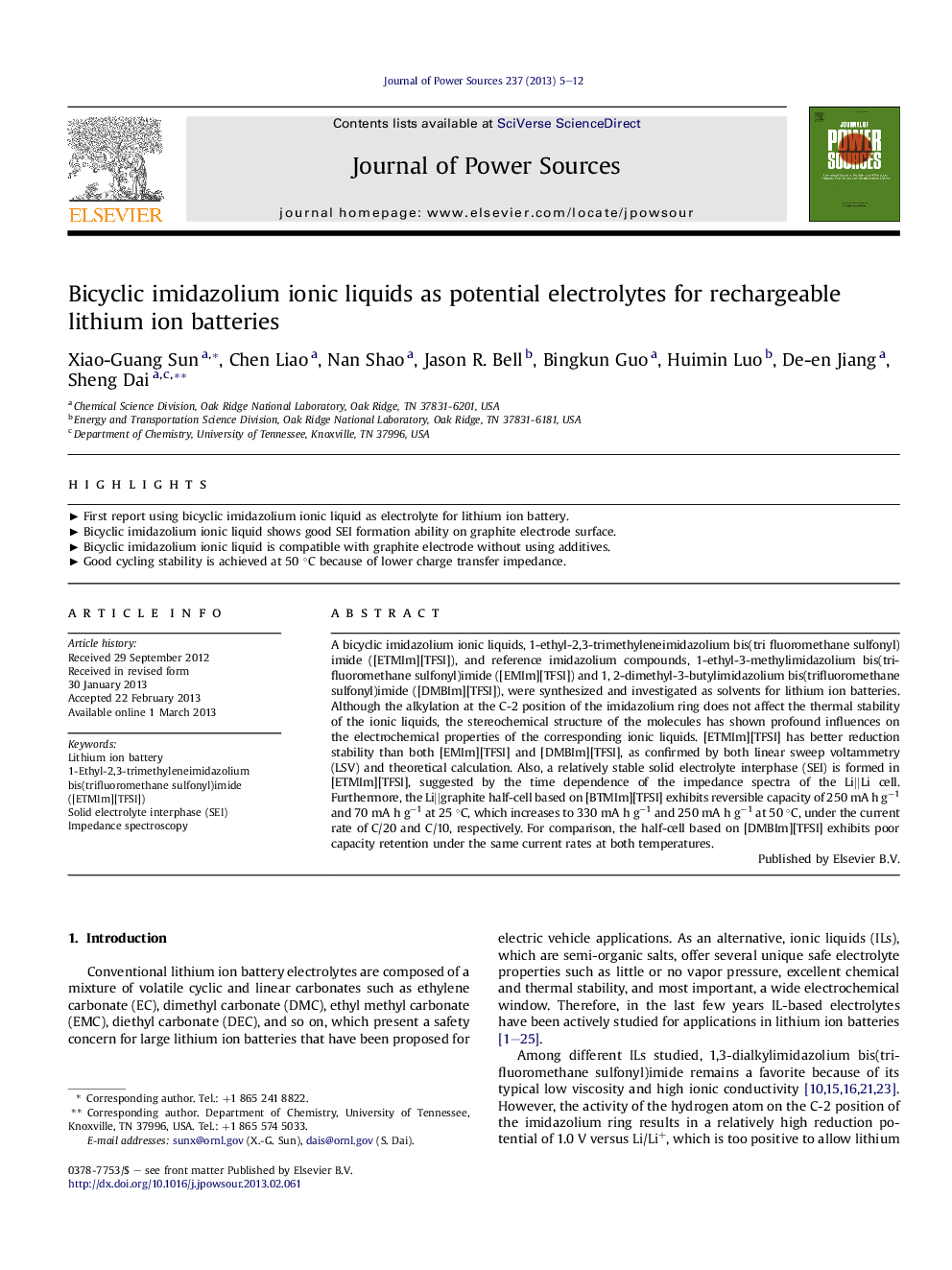| Article ID | Journal | Published Year | Pages | File Type |
|---|---|---|---|---|
| 1287709 | Journal of Power Sources | 2013 | 8 Pages |
A bicyclic imidazolium ionic liquids, 1-ethyl-2,3-trimethyleneimidazolium bis(tri fluoromethane sulfonyl)imide ([ETMIm][TFSI]), and reference imidazolium compounds, 1-ethyl-3-methylimidazolium bis(trifluoromethane sulfonyl)imide ([EMIm][TFSI]) and 1, 2-dimethyl-3-butylimidazolium bis(trifluoromethane sulfonyl)imide ([DMBIm][TFSI]), were synthesized and investigated as solvents for lithium ion batteries. Although the alkylation at the C-2 position of the imidazolium ring does not affect the thermal stability of the ionic liquids, the stereochemical structure of the molecules has shown profound influences on the electrochemical properties of the corresponding ionic liquids. [ETMIm][TFSI] has better reduction stability than both [EMIm][TFSI] and [DMBIm][TFSI], as confirmed by both linear sweep voltammetry (LSV) and theoretical calculation. Also, a relatively stable solid electrolyte interphase (SEI) is formed in [ETMIm][TFSI], suggested by the time dependence of the impedance spectra of the Li||Li cell. Furthermore, the Li||graphite half-cell based on [BTMIm][TFSI] exhibits reversible capacity of 250 mA h g−1 and 70 mA h g−1 at 25 °C, which increases to 330 mA h g−1 and 250 mA h g−1 at 50 °C, under the current rate of C/20 and C/10, respectively. For comparison, the half-cell based on [DMBIm][TFSI] exhibits poor capacity retention under the same current rates at both temperatures.
► First report using bicyclic imidazolium ionic liquid as electrolyte for lithium ion battery. ► Bicyclic imidazolium ionic liquid shows good SEI formation ability on graphite electrode surface. ► Bicyclic imidazolium ionic liquid is compatible with graphite electrode without using additives. ► Good cycling stability is achieved at 50 °C because of lower charge transfer impedance.
